Derived from the Japanese root ‘Tsu’ for ‘harbor’ and ‘nami’ for ‘wave,’ ‘tsunami’ literally means ‘harbor wave.’ It was so called because many times the Japanese fishermen who left their cottages intact returned after an eventful day to find them washed away from the harbor by the tsunami waves in their absence. A tsunami is defined as ‘the successive waves arising from an oceanic disturbance, usually caused by a submarine earthquake, volcanic eruption, landslide, and glacial calving which is the breaking of an iceberg or ice from the main glacier into the sea.’ Very rarely the cause assignable to a tsunami may be a meteorite or a nuclear test. Tsunamis occur due to a huge displacement of water in a large body of water which, in addition to a sea, may also be a big lake or a river. Tsunamis are not easily predictable, though some warning systems have been said to be quite useful. This unpredictability is one of the factors which adds to the devastation caused by the tsunamis. A tsunami causes destruction first by its forceful strike followed by an equal and opposite withdrawal which sweeps across the landscape and ensures a total loss to all the points hit in the first instant turning them into mere heaps of debris.
1. The 2011 Tohoku Tsunami
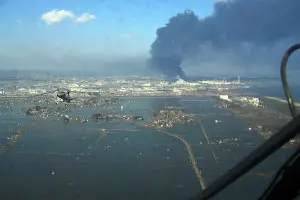
An earthquake of 9.0 magnitude on the Richter scale for a duration of 6 minutes hit the Japanese coast on March 11, 2011 at 14:46 local time. It was the latest and the most powerful earthquake that ever hit Japan. And according to the Japanese Prime Minister Naoto Kan, ‘In the 65 years after the end of World War II, this is the toughest and the most difficult crisis for Japan.’ The tsunami caused 15,878 deaths, inflicted injuries to 6,126 persons, while 2,713 people were reported as missing. The tsunami also caused a meltdown of 3 reactors in the Fukushima Daiichi Nuclear Power Plant due to overheating after the failure of the cooling system of the reactors. Residential areas falling within 10 km of the nuclear complex were evacuated. The World Bank estimated the loss exceeding U.S. $235 billion being the heaviest loss arising from a natural disaster in recorded history.
2. The 2004 Indian Ocean Tsunami
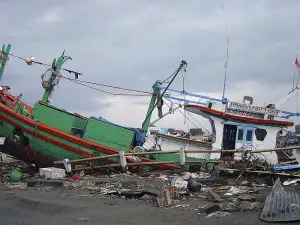
On December 26, 2004, an earthquake of about 9.1 magnitude occurred off the west coast of Sumatra. The earthquake was felt as far away as Bangladesh, India, Malaysia, Thailand, and Singapore. It caused a tsunami with more than 30-meter-high waves killing over 230,000 people in 14 countries. It is considered 1 of the 10 deadliest tsunamis in recorded history. This earthquake occurred 3 days after an 8.1 magnitude earthquake occurred in an uninhibited region of New Zealand, and whereas some seismologists interlink the 2 earthquakes, they consider it an unusual occurrence. The energy released by this tsunami is estimated to be 26 megatons that is equal to 1500 times that of the Hiroshima atomic bombs.
3. The Thera Tsunami
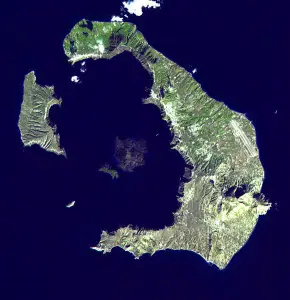
The Thera Tsunami is one of the earliest tsunamis which occurred 3,600 years ago following the Minoan eruption which is also known as Thera eruption. Thera is an island located to the southeast at about 200 km from Greece’s mainland. It occurred at the peak of the Minoan Civilization. The eruption caused a huge tsunami that destroyed the island of Crete, and the disappearance of the legendary continent Atlantis is also said to have been caused by this tsunami. A caldera, a cauldron-like volcanic deposit was formed after the disastrous eruption, and a city also named Caldera was what remained after the tsunami.
4. The Unzen Tsunami
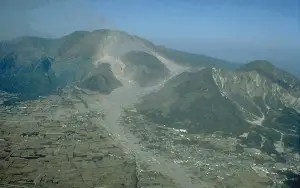
On the night of May 21, 1792, an earthquake occurred due to a volcanic eruption on Mount Unzen in the Shimabara Peninsula of the Nagasaki prefecture in Japan. It was followed by a huge tsunami that swept the city of Shimabara, and the dome of Mayuyama collapsed under its great impact. The tsunami killed 15,000 people from landslides. Five thousand people were killed when the tsunami hit the Ariake Bay for the first time, and another 5,000 were killed when it bounced back after retracting. Waves of more than 15 meters’ height were recorded at different places while, depending upon the bottom topography at the Osaki-bana point of the town of Fitsu the waves grew as high as 57 meters.
5. The Lituya Bay Megatsunami
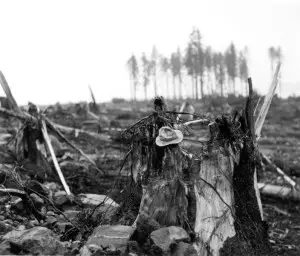
On July 9, 1958 an earthquake of 7.9 on the Richter scale triggered a megatsunam, which was not one of the deadliest tsunamis. Though it is noted for its waves being as high as 524 meters or 1,720 feet. The epicenter of the earthquake was 21 km southeast of the Lituya Bay. The height of the waves were considered 470 feet taller than the Empire State Building. It was regarded the highest megatsunami in recorded history. It was a megatsunami which is distinguished from a normal tsunamis being caused by a landslide rather than the rising or lowering of the oceanic floor.
6. Krakatoa, Tsunamis
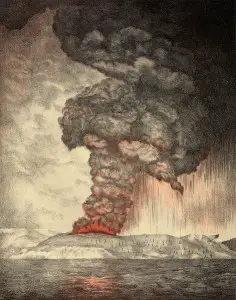
On August 26, 1883, a huge earthquake culminated from a series of volcanic eruptions of Krakatoa which started in May, 1883. The Krakatoa Island is located in the Sunda Strait between the Indonesian islands of Java and Sumatra. The sound of the Krakatoa volcanic eruption was heard as far as 4,800 km away from the source of origin. It is considered the loudest in recorded history. Shockwaves arising from the eruptions were recorded on the barographs the world over. The tsunamis caused by these eruptions caused the death of 36,417 people and destroyed more than 66 percent of the Krakatoa Island.
7. The Lisbon Tsunami
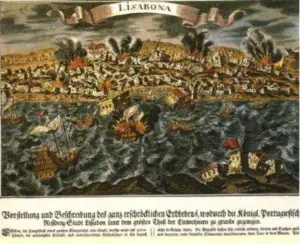
On November 1, 1755 a big earthquake with its epicenter in the Atlantic Ocean at a distance of 200 km from Cape St. Vincent occurred. The earthquake was followed by a great tsunami and huge fires causing more than 10,000 deaths in Lisbon alone. It is considered to be one the deadliest tsunamis. The tsunami waves were higher than 95 feet. The earthquake shocks occurred thrice while the double striking of the tsunami waves destroying more than 85 percent of the buildings.
8. The Messina Tsunami

On December 28, 1908 an earthquake with its epicenter in the city of Messina occurred at 5:20. The earthquake lasted for 40 seconds only, yet the tsunami that followed it caused the death of 70,000 residents of Messina in Sicily, Italy. The tsunami following the earthquake destroyed almost 90 percent of the structures. Including the fatalities in the suburban areas, the death toll was more than 100,000 people. The height of the waves ranged from 20 to 40 feet. It is considered one of the deadliest tsunamis in history.
9. The Kamchatka Tsunami
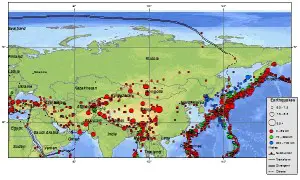
On November 4, 1952 at 4:58 local time, an earthquake of 8.2 magnitude on the Richter scale hit the coast of Kamchatka Peninsula in Russia. The tsunami which followed it damaged the structures on a large scale, but there was no loss of human life. A bridge connecting Cocoanut Island to the seashore was destroyed completely. A few boats were also destroyed. The estimated losses arising from the devastation were in the range of $700,000 to $900,000. The impact of the tsunami reached as far as Alaska, Chile, and New Zealand.
10. The Crete Tsunami
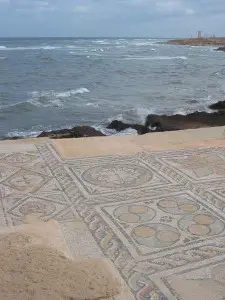
An earthquake ruptured the oceanic floor in the eastern Mediterranean on July 21, 365 AD. Its epicenter was Crete, and the estimated magnitude of the earthquake was 8 on the Richter scale. The earthquake was followed by a huge tsunami which devastated the southern and eastern coasts of the Mediterranean. Libya, Alexandria, and the Nile Delta were the most effected regions. Egypt, Cyprus, and Sicily also suffered from the destruction caused by the tsunami. Thousands of people were killed, and the event was referred to for centuries in literature. The famous Roman Historian Ammianus Marcellinus recorded in detail the 365 tsunami which killed many thousands of people.
Conclusion:
Just as some animals, like big cats, crocks, and sharks are meant to kill, some natural phenomena like earthquakes, volcanic eruptions, tsunamis, and glacial calving also play a role as killers, and tsunamis compared to all of them top the list. Tsunamis hit and hit hard wave after wave and keep on hitting until all in their path is devastated completely. Nature perhaps tests mankind to its limits in order that it develops new and more effective ways with enhanced preparedness to deal with the ordeals occurring. Anne M. Mulcahy, former CEO of Xerox Corporation said, ‘Whenever an earthquake or tsunami takes thousands of innocent lives, the shocked world talks of little else.’










Leave a Reply